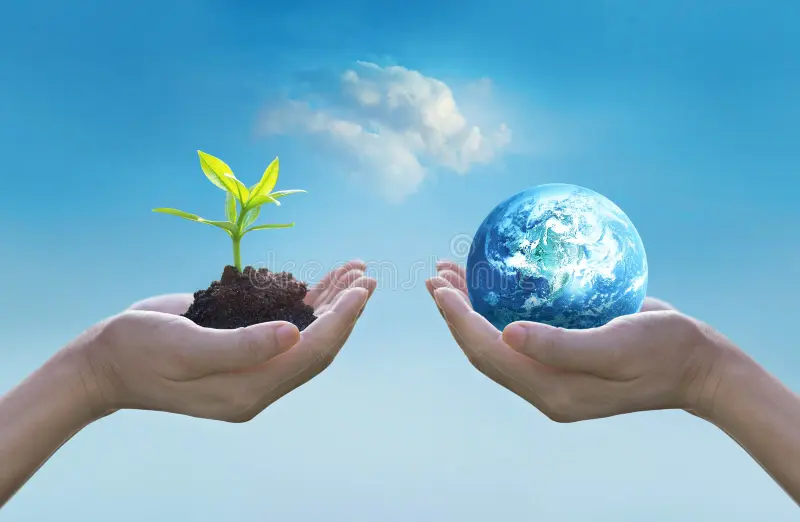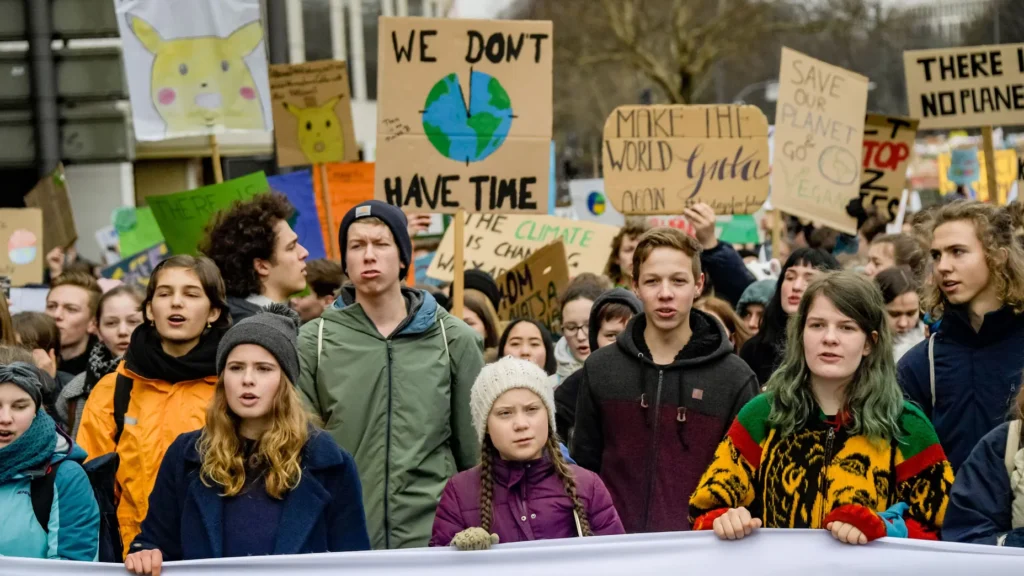Climate change, deforestation, pollution, and the loss of biodiversity are driving environmental activism to global prominence. Activists from all over the world are pleading for immediate environmental protection in a variety of forms, from small-scale local groups to large-scale international campaigns. This daily update examines the most recent developments in environmental activism, focusing on significant protests, campaigns, and legal actions and their effects on public awareness and policies.
The Most Important Changes in Environmental Activism 1. Climate Activists have increased their efforts to demand stronger commitments to reduce greenhouse gas emissions as world leaders prepare for the 29th United Nations Climate Change Conference (COP29) in Dubai later this year.
Recent Events:
Millions of people across Europe took part in climate strikes, which culminated in large demonstrations in major European cities like Berlin, London, and Paris. Activists want to end subsidies for fossil fuels, invest more in renewable energy, and set higher carbon reduction goals.
Youth-led groups in the United States, such as Fridays for Future and the Sunrise Movement, organized demonstrations in major cities to demand that the government implement a Green New Deal and hold businesses accountable for their impact on the environment.
Activists in developing nations, particularly in the Global South, have called for greater support for adaptation measures and climate justice in response to the disproportionate effects of climate change on vulnerable communities.
Problems and Effects:
At COP29, where crucial negotiations will take place to determine the future of international climate policy, governments will be under tremendous pressure to take bolder actions as a result of these global strikes.
However, activists face obstacles such as the need to bridge the climate finance and responsibility gap between developed and developing nations and the opposition of powerful fossil fuel interests.
2. As they fight to protect their lands,

Water, and traditional ways of life from industrial destruction, indigenous communities all over the world are becoming increasingly active in environmental activism.
Important Events:
Indigenous groups have stepped up their fight against illegal logging, mining, and deforestation in the Amazon rainforest. The urgent need to safeguard the Amazon, which is frequently referred to as the “lungs of the Earth,” has received international attention as a result of recent protests in Brazil and neighboring nations.
Indigenous activists in Canada are leading the fight against pipeline projects that would harm their waters and lands. One of the most prominent examples of this struggle is the ongoing opposition to the Coastal GasLink pipeline that is led by the Wet’suwet’en Nation.
Using both legal channels and direct action, Indigenous communities in Australia are challenging large-scale mining projects that put sacred sites and ecosystems in danger.
Environmental and Cultural Importance:
Environmental activism by indigenous peoples also aims to preserve cultural heritage, assert sovereignty over traditional lands, and protect the environment.
Indigenous lands are frequently biodiversity hotspots and play a crucial role in climate mitigation, so these movements are increasingly being recognized as essential to global conservation efforts.
3. Environmental activists’

Successes and failures as a result of legal actions Environmental activists are attempting to hold governments and corporations accountable for climate change and environmental degradation.
Recent Changes in the Law:
Following a lawsuit brought by the environmental group Urgenda, a landmark ruling in the Netherlands required the government to further reduce carbon emissions in order to comply with the Paris Agreement. This case has established a global precedent for climate litigation.
A federal judge in Alaska blocked the construction of a new oil pipeline, citing the project’s potential impact on the Arctic ecosystem and climate, which was a significant victory for environmental groups in the United States.
However, not every legal dispute has been resolved successfully. Environmentalists have been outraged by the court’s decision in Indonesia to dismiss a lawsuit challenging the government’s decision to expand palm oil plantations.
Implications for Politics and the Law:
These legal cases show that the judiciary is increasingly being called upon to enforce environmental laws and international agreements in environmental governance.
The outcomes of these cases can have a big impact on environmental policies, business practices, and the fight against climate change around the world.
4. Youth Activism and the Emergence of New Environmental

Leaders Young people are using social media, demonstrations, and innovative campaigns to call for immediate action on climate change and environmental justice.
Initiatives Led by Youth:
Millions of young people around the world continue to be inspired to participate in climate strikes and advocate for stronger climate policies by Greta Thunberg’s Fridays for Future movement. A recent global digital strike organized by the movement reached a large online audience.
Young environmentalists are leading efforts in Africa to stop deforestation, encourage sustainable agriculture, and make people aware of the effects that climate change is having on the continent. One of the prominent figures leading this movement is Ugandan Vanessa Nakate.
Youth activists in Asia are focusing on issues like air quality, renewable energy, and plastic pollution. The group “Youth for Climate India” has worked hard in India to fight against air pollution and promote clean energy solutions.
Achievements and Challenges:

Despite the fact that youth activists have been successful in raising awareness and influencing public opinion, they frequently encounter obstacles such as political opposition, a lack of resources, and being marginalized by mainstream media.
Nonetheless, their unwavering advocacy has resulted in measurable outcomes such as policy modifications, increased pledges to combat climate change, and the empowerment of a new generation of environmental leaders.
Environmental activism’s newest trends The rise of digital activism and online campaigns has altered the organization and mobilization of environmental campaigns, enabling activists to reach a wider audience and coordinate global actions.
Important Changes:
Social media platforms like Twitter, Instagram, and TikTok are being used to organize protests, share real-time updates from the front lines of activism, and raise awareness of environmental issues.
Supporting environmental causes through online petitions and crowdfunding campaigns has become increasingly common, making it easier for activists to gain support and raise funds more quickly.
Additionally, the development of virtual communities in which activists can exchange resources, strategies, and solidarity across borders has been made possible by digital activism.
Chances and dangers:
While there are numerous opportunities in digital activism, there are also risks associated with it, such as the spread of false information, cyber-attacks on activist groups, and difficulties in maintaining momentum in online movements.
However, environmental activism continues to rely heavily on digital platforms, particularly in areas where physical demonstrations are prohibited.
2. Intersectional Environmentalism

As activists have come to realize the connection between human rights and the environment, intersectional environmentalism—which links environmental issues to social justice—has gained prominence.
Recent Concentrations:
Environmental degradation is increasingly being linked to issues like racial inequality, economic injustice, and indigenous rights, according to activists.
The disproportionate effects of climate change and pollution on marginalized communities are the focus of new campaigns calling for environmental and social equity-promoting policies.
To ensure that historically underrepresented groups’ voices are heard in decision-making processes, environmental organizations are working to diversify their leadership and membership.
Impact on Society:
The environmental movement is becoming more inclusive and responsive to the requirements of diverse communities as a result of intersectional environmentalism’s contribution to its broadening.
Human rights groups, environmentalists, and social justice advocates are forming new alliances as a result of this strategy, increasing activism’s overall impact.
3. Campaigns for Corporate Accountability and Divestment

Environmentalists are increasingly targeting corporations, particularly those in the fossil fuel industry, in an effort to hold them accountable for their contribution to climate change and environmental destruction.
Important Efforts:
The movement known as “fossil fuel divestment” has gained a lot of traction because it encourages institutions to stop investing in fossil fuel companies. Around the world, universities, pension funds, and religious institutions have pledged to withdraw billions of dollars from these industries.
In sectors like fashion, agriculture, and technology, where environmental and ethical issues are prevalent, activists are also advocating for increased transparency and corporate responsibility.
Environmental violations against corporations are on the rise, with cases brought against them for pollution, deforestation, and violations of human rights in their operations.
Response from Business:
Some businesses have announced plans to invest in renewable energy, adopt sustainable practices, and reduce their carbon footprints in response to pressure from activists. However, activists continue to examine these commitments and demand actions that are more substantial and transparent.
The relationship between businesses and the environment is being reshaped as a result of the increasing recognition that businesses must align their operations with environmental sustainability.
In conclusion,
Environmental activism is a dynamic and ever-evolving force that is motivated by the pressing need to deal with the most pressing problems facing the planet. Activists are making significant progress in preserving the environment and advocating for systemic change through a variety of means, including legal victories, Indigenous resistance movements, global climate strikes, and youth-led campaigns. Environmental activism plays a crucial role in shaping policies, raising awareness, and constructing a more sustainable future for all as it continues to expand and diversify. Stay tuned for more information about the most recent developments in global environmental activism.



